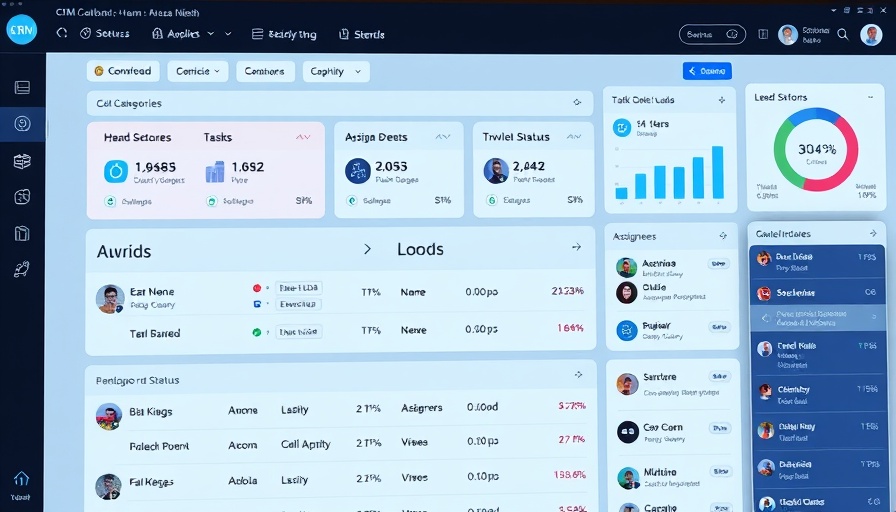
Transforming CRM with Asana Templates
In today's competitive business landscape, maintaining strong customer relationships is essential for growth, especially for mid-sized companies generating between $2M and $10M in annual revenue. As businesses scale their operations, tracking interactions with customers can become increasingly complex. Enter Asana CRM templates—robust tools designed to streamline customer relationship management by organizing contacts, tracking communication, and managing sales processes effectively.
Why Choose Asana for Your CRM Needs?
Asana is known for its user-friendly interface, making it easier for teams to adopt and integrate into their daily workflows. This platform helps businesses not only to manage tasks efficiently but also to foster collaboration among team members, which is crucial when scaling operations. By utilizing pre-designed CRM templates, companies can save time while ensuring that all important customer interactions are tracked and managed smoothly.
The Benefits of Using CRM Templates
CRM templates in Asana allow businesses to:
- Enhance visibility: With clear workflows, every team member knows their tasks and responsibilities when managing customer relationships.
- Boost productivity: Templates minimize repetition, allowing teams to focus on engagement rather than administrative tasks.
- Facilitate collaboration: The built-in features enable teams to communicate effectively, share updates, and resolve issues quickly, ensuring everyone stays on the same page.
Unique Use Cases for Asana CRM Templates
Here are three practical ways businesses can implement these templates to maximize their customer relationship strategies:
- Sales Pipeline Management: Use Asana to create a sales funnel that tracks the stages of customer engagement, helping to identify which leads require immediate attention.
- Customer Follow-Up Processes: Automating and scheduling follow-up tasks through templates can ensure no customer is left unattended.
- Feedback and Improvement Loop: Implementing a template for tracking customer feedback can help businesses stay agile, iterating on their offerings.
Common Misconceptions About CRM Systems
Many business owners believe that implementing a CRM system is an expensive and complex process. However, Asana’s templates illustrate how businesses can leverage existing software tools to enhance customer relationships without breaking the bank. In fact, the investment in robust workflows can lead to significant ROI through improved customer retention and optimized processes.
Strategizing Your CRM Implementation
As companies look to expand, it’s critical to recognize the best practices for CRM integration. Start by defining clear goals such as improving customer satisfaction or increasing sales by a certain percentage. Next, involve your team in the selection of structures within Asana to ensure buy-in. Regularly review the system and make necessary adjustments to keep it aligned with your evolving business needs.
In conclusion, as an active scaling business, leveraging Asana CRM templates can dramatically streamline your customer relationship management, enhance collaboration, and ultimately drive growth. Don't wait until inefficiencies unduly stress your operations—explore how these tools can help establish a foundation for sustained success.
 Add Row
Add Row  Add
Add 



Write A Comment